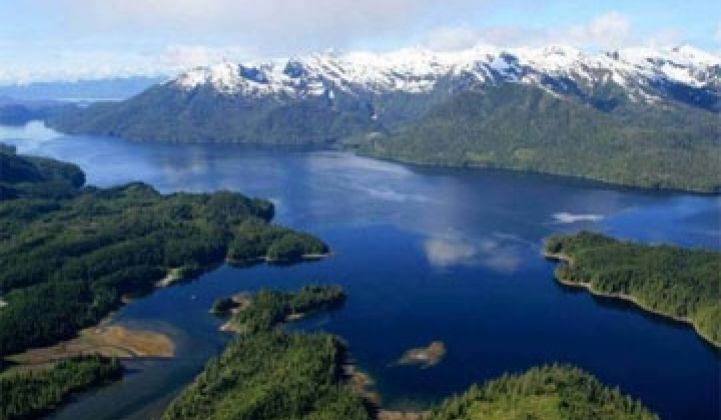Local Host has created a cooling system for data-centers that siphons icy water from 984 feet below the surface of Norway's Nordfjord.
Now the startup wants to build the world's largest green data center in an abandoned mine.
Local Host CEO Sindre Kvalheim says his goal is to build "the world's largest, high-security green data center." There are reasons to think he might succeed. The central coast Sogn og Fjordane region of Norway has an abundance of cheap hydro-electric and wind power to run racks of energy-hungry servers. The company already attracted the attention of IBM and Tandberg. Now it plans to reach out to Google and Microsoft for the $100 million it needs to complete the project.
It also has an endless supply of freezing water in the 66-mile-long fjord nearby, Norway's sixth longest. "We can cool a data center more efficiently that any where else in the world," said Kvalheim, who disclosed details of the project for the first time outside of Norway at the Nordic Green II conference taking place in Menlo Park this week (see more coverage here). "We know it's not only doable, it's feasible."
The company has been testing its cooling system for two years at a small, 20-rack data center it runs in Maloy, Norway. "We have reduced our power costs by 50 percent" by eliminating the need for an electric chiller to cool the servers, says Kvalheim. The salt water brought from the depths of the fjord is 45 degrees and cools less corrosive fresh water, which circulates among the computers. The fjord water remains pressurized and requires little energy to pump.
Local Host began studying the underground site in October and expects to complete a feasibility study in June. Kvalheim is convinced the findings will be encouraging.
Both Norway and Iceland hope to take advantage of their often-frigid weather to eliminate one of the more vexing problems facing IT managers: air conditioning. Cooling can consume half of the power used in data centers. Although many companies have been able to reduce their air conditioning bills with passive cooling and better data center design, air conditioners remain standard equipment in data centers. When it comes to passive cooling, Iceland and Norway are ideal. Even in summer, the temperature often hovers in the 50s. Iceland has a few projects coming on line this year. (The ample supplies of hydroelectric and geothermal power also make both countries green power centers. 98 percent of Norway's power comes from renewable power -- it exports the vast majority of its natural gas.)
Ireland is already capitalizing on its coastal breezes and cold temperatures to woo data center owners. Microsoft recently planted a green data center there.
But the challenges facing the Norwegian project are significant. IBM has funded 10 percent of the feasibility study and the Norwegian government kicked in 50 percent. However, finding $100 million in construction costs are beyond the means of the tiny company. That has Kvalheim eager to approach Internet giants Google and Microsoft.
He says the 1.4 million-square-foot center will have six stories with tunnels and roads for customers to haul in trailer-truck-sized portable data centers. The abandoned olivine mine could fit between 2,000 and 3,000 of the portable units, which Kvalheim says he will build, even though vendors such as Hewlett-Packard and Sun offer commercial models.
Construction could start in 2011, with the demand for data-intensive Internet services only expected to increase in the years to follow. As the world learns to cope with the need for greater energy efficiency, green centers are likely to draw increasing interest from the online titans of the coming decade. In Kvalheim's view, that means harnessing the frigid water of a Norwegian fjord.



